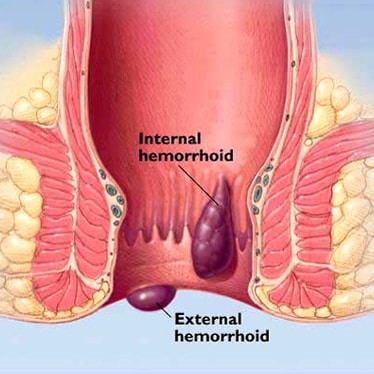PILES TREATMENT IN AYURVEDA
This article is about Piles treatment in Ayurveda techniques. Piles one of the commonest anorectal disease has always been a burning issue since ancient times and with growing unhealthy dietary and lifestyle pattern, the incidence of this disease is progressing day by day. With advancement in medical techniques, different methods have been devised for the management of piles but the recurrence problem doesn’t seem to fade away.
Ayurveda an ancient medical practice indigenous to Indian subcontinent provides a promising management of anorectal disease in a safe and effective way. Nepal being the part of the Indian subcontinent also has a great influence of Ayurveda practice and not surprisingly piles treatment in Ayurveda is the first choice of patient.
At first: What is Piles?
The word ‘Piles’ is derived from the Greek word Pila meaning ‘ball like swelling’. Piles manifests as a ball like swelling in the anal region. It occurs due to abnormal sliding of anal cushion which comprises of blood vessels, smooth muscles and connective tissues in the anal region.
What causes Piles?
- Hereditary – People suffering from piles usually have a family history of same condition
- Straining – Straining during defecation increases the intra-abdominal pressure which tends to abnormally push the anal cushion out of its site
- Abnormal bowel habit – Frequent diarrhea and chronic constipation both can cause piles.
- Low fiber diet – Intake of low fiber diet decreases the stool load which may lead to straining and constipation and consequentially to piles.
- Pregnancy – Due to the weightage of fetus and pregnancy induced constipation, most women often experience piles during their pregnancy. Some may relieve after delivery while in some it may remain persistently if not treated.
- Carcinoma rectum
Clinical features of piles
- Bleeding during defecation
- Mass coming out of ano
- Pain in the anal region
- Constant itching and irritation sensation around the anal region
- Anemia
Piles from Ayurveda perspective
Piles is recognized as Arsha in Ayurveda. Various causative factors have been attributed for causing Arsha, some of which include:
- Hot and spicy diet
- Suppression of natural urges
- Sedentary life style
- Weak digestive fire
- Constipation and straining
- Hereditary factors
Piles treatment in Ayurveda
Ayurveda recommends conservative and surgical methods for management of piles according to the condition of piles.
1. Avagaha
Avagaha or Sitz bath is the primary recommendation for piles treatment in Ayurveda. In this method the patient is asked to sit in the warm water mixed with antiseptic like iodine or warn decoction of Triphala. This technique is very effective to reduce the symptoms of swelling and pain and promotes healing.
2. Management of constipation
Piles treatment is incomplete without the management of constipation. Since chronic constipation leads to straining during defecation which further leads to manifestation of piles. The herbal laxatives like Triphala, Panchasakar, Isabgol etc. are usually prescribed for managing constipation.
Usage of such laxatives facilitates easy passage of stool avoiding straining as well as bleeding.
3. Local application
In addition to laxatives, lubricant in the form of ghee and oil preparation are usually prescribed during piles treatment in Ayurveda. Jatyadi oil, is one common form of oil lubricant prescribed for local application. It is used by dipping cotton swab in the oil and applying the dipped swab inside the anus.
Along with easy passage of stool, the anti-inflammatory drugs present in this herbal oil helps to reduce inflammation and promote wound healing too.
4. Dietary and lifestyle management
Piles treatment in Ayurveda not only focuses on the medication but also emphasize on diet and lifestyle pattern for its management.
- Foods that produce irritation in the mucosal layer of anal region should be completely avoided. These specially include hot and spicy foods, alcohol and coffee too.
- Meat products and other foods that take time to digest are often related to cause constipation. Thus such food also should be minimized or if possible prohibited.
- Fiber enriched diet and abundant intake of water is highly recommended in order to prevent constipation reduce the risk of piles manifestation.
- Long duration of sitting and that too on a hard surface should be reduced. Intermittent walking and standing stretches during the working hours will be beneficial.
5. Ksharsutra
Ksharsutra application is synonymous to piles treatment in Ayurveda. Ksharsutra is a medicated thread prepared by dipping and drying a thread in alkaline extracts of different herbs. A ksharsutra is applied by a trained physician around the piles mass.
The tightening of the thread around the mass generates pressure necrosis which leads to falling off of the mass. This technique is very effective in higher grade piles where the mass prolapses outside the anal canal and return back only on manipulation or remain outside persistently.
Other than these the physician can prescribe Ayurvedic medicines for piles treatment as per necessary.
In the end
Piles treatment through Ayurveda can be a safe and cost effective method. Several cases of piles have been cured with less rate of recurrence and future complications through Ayurveda. Hence Ayurveda can be the best choice for piles treatment.
Nepal being the part of Indian subcontinent has a major influence of Ayurveda system of medicine. When it comes for piles treatment, Ayurveda is usually seen as the first choice. With increasing popularity, several private clinics have been established for piles treatment in Ayurveda. Be sure to consult with the certified and trained Ayurveda physician only.
